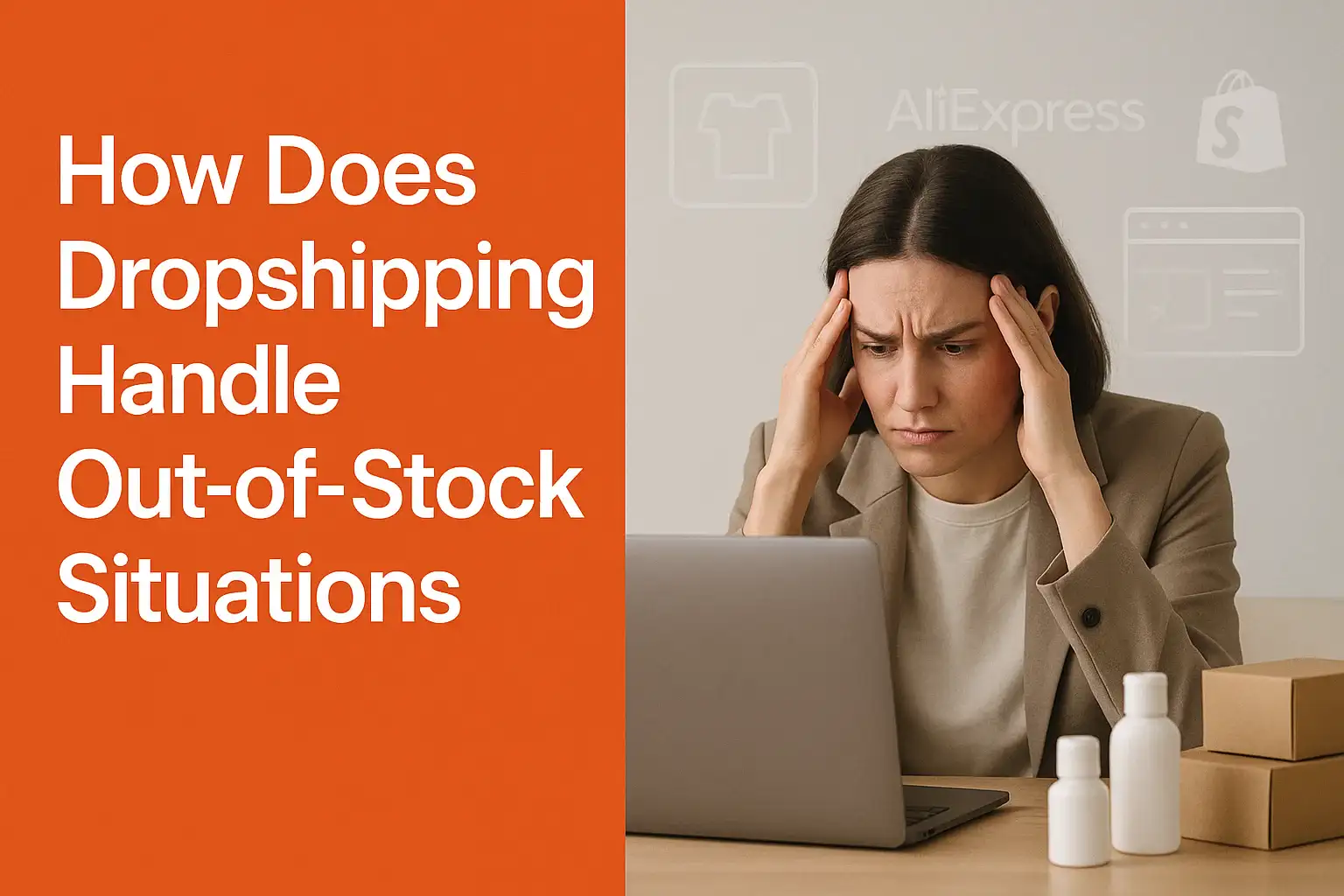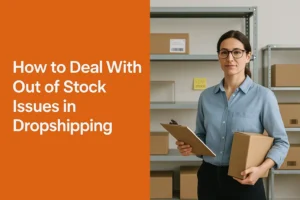Out-of-stock situations can make or break a dropshipping business. If you’ve ever asked yourself, “How does dropshipping handle out-of-stock situations?”, you already know the frustration. Customers expect the item they ordered. When it suddenly disappears from your supplier’s catalog, sales stop, refunds pile up, and negative reviews creep in.
But here’s the good news: stockouts don’t have to destroy your business. With the right systems, communication, and backup strategies, you can manage them well – and even turn problems into opportunities for growth.
The Ghost Inventory Problem in Dropshipping
One of the biggest challenges in dropshipping is the “ghost inventory” issue – selling products that seem available but are actually gone.
Why This Happens
- Supplier reliance: You don’t own stock; your supplier does. If they run out, so do you.
- Unforeseen demand spikes: Viral TikTok trends or sudden popularity can wipe out inventory overnight.
- Seasonal products: Holiday rushes often lead to shortages.
- Logistics delays: Shipping problems can create bottlenecks.
- Supplier mistakes: Miscounts or poor warehouse management leave you with inaccurate numbers.
In short, a single supplier error becomes your customer’s disappointment.
Proactive Strategies to Prevent Stockouts
The best way to handle stockouts is to prevent them before they happen.
Keep Supplier Communication Alive
- Regular check-ins: Don’t just assume your supplier has stock – ask.
- Real-time updates: Work with suppliers who provide live stock feeds.
- Inventory sync tools: Automate the connection between your store and supplier data.
Pro tip: Experienced dropshippers will tell you that consistent communication with suppliers is non-negotiable.
Diversify Your Supplier Base
Relying on a single supplier is risky.
- Multiple sources: Have two or more suppliers for popular items.
- Backup options: Keep a fallback for bestsellers.
- Geographic spread: Work with suppliers in different regions to reduce risk during local shortages.
This way, even if one fails, your business keeps moving.
How Does Dropshipping Handle Out-of-Stock Situations Without Losing Sales
Even with precautions, stockouts will happen. The key is how quickly and clearly you respond.
Use Automated Alerts
- Set low-stock thresholds (e.g., under 20 units).
- Get notified before inventory dries up completely.
Adjust Your Storefront
- Hide products temporarily if they’re unavailable.
- Use an “Out of Stock” label so buyers aren’t misled.
- Offer pre-orders for items that will be restocked soon.
Be Transparent with Customers
Silence kills trust. Honesty builds it.
- Send clear updates about delays.
- Use simple, human language instead of excuses.
Keeping Customers On Your Side
Out-of-stock issues don’t have to mean lost sales if you play it smart.
- Suggest alternatives: Offer similar items that are in stock.
- Back-in-stock alerts: Let customers sign up to be notified when products return.
- Discount for waiting: A small voucher can turn frustration into loyalty.
Example: One store reduced negative feedback by 20% simply by sending apology emails with discount codes during stockouts. Customers appreciated the honesty and often came back to shop again.
Long-Term Fixes for a Stronger Store
If you want to scale your dropshipping business, you need systems that make stockouts rare instead of routine.
Use Inventory Management Software
- Centralized control: Manage multiple suppliers from one dashboard.
- Predictive analytics: Forecast demand using past sales data.
- Data-driven planning: Base restocking decisions on facts, not guesses.
Analyze Your Sales Data
- Spot trends: Which products sell out fastest?
- Forecast demand: Anticipate seasonal or viral surges.
- Evaluate suppliers: Track reliability and delivery performance.
Over time, this helps you prioritize trustworthy suppliers and avoid repeat mistakes.
Turning Stockouts into Opportunities
Stockouts are stressful – but they don’t have to sink your business. With a proactive plan, transparent communication, and smart tools, you can turn a potential disaster into a chance to prove reliability. Customers often forgive mistakes if they feel valued and informed.
Instead of fearing stockouts, treat them as opportunities to:
- Build trust through honesty.
- Strengthen your supplier relationships.
- Learn from data and prepare for growth.
How AeroDrop Helps You Stay Ahead of Stockouts
At AeroDrop, we designed our platform specifically to solve these challenges. We know that inventory problems are the biggest headache for dropshippers – so we built features to remove the stress:
- Hands-Free Order Fulfillment: Orders are auto-processed to reduce human errors.
- Real-Time Dashboard: Track orders, costs, and profits instantly so you know exactly what’s happening.
- Faster Shipping: Even from overseas, so customers aren’t left waiting.
- Supplier Integration: Connect with multiple suppliers and reduce the risk of stockouts.
- 24/7 Expert Support: Get help anytime you hit a roadblock.
- Hand-Picked Products: Access reliable products, pre-vetted to minimize stock issues.
In short, AeroDrop doesn’t just help you handle stockouts – it helps you avoid them. That means fewer angry customers, more repeat buyers, and a stronger online business.
Ready to stop worrying about ghost inventory? Try AeroDrop today and make your dropshipping journey easier, faster, and smarter.







